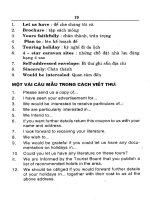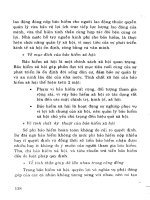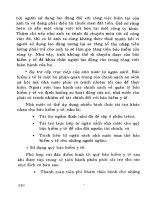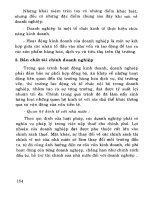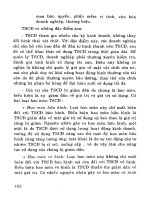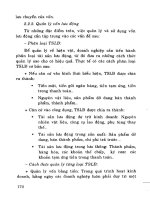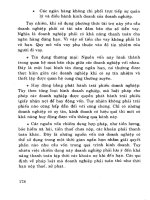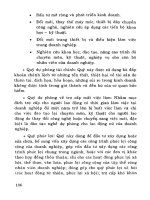Read and retell 3 Teachers Guide
Bạn đang xem bản rút gọn của tài liệu. Xem và tải ngay bản đầy đủ của tài liệu tại đây (7.98 MB, 157 trang )
Unit 1| A New Neighbor
Read & Retell 3: Teacher’s Guide
Read & Retell Objectives:
1. Retelling is the best after reading activity for young learners to summarize what they have read. Retelling helps
readers create a mental image of the story. Also, retelling allows teachers to assess learners’ comprehension as well as
oral fluency.
2. Oral reading fluency is the ability to read a text with accuracy, good speed, and good expression. Oral reading fluency
activities help boost oral competency and also their understanding.
Unit Objectives:
1. Students will learn about Characters and Pronunciation.
2. Students will understand the meaning of new words and be able to use the words in sentences.
3. Students will practice reading comprehension skills.
4. Students will learn skills in summarizing passages and giving opinions.
Key Words and Phrases:
move, Earth, tag, backyard, catch, throw
LESSON GUIDE
Before Reading
Words
New words are introduced with pictures and help learners get ready for the story.
Introduce the vocabulary words to the students. Thoroughly explain the meaning of the words by relating them to their
corresponding picture. For more reinforcement, model more examples of the vocabulary words on the board. As you read
each vocabulary word, have the students repeat after you; for more advanced students, simply let them read the
vocabulary words out loud, and have them explain their meanings
Before You Read
A quick and simple activity helps learners actively explore the picture, and predict the story before reading it.
This section is key in helping students gain awareness of the passage they are about to read. Ask the students what they
see in the pictures. Make sure the students use specific details and are aware of the events taking place in the pictures.
Then play the recording and let the students hear the story. After the students have heard the recording read the story
again as a class.
Extra Idea (optional):
Hangman: Think of a word from the unit’s key words and phrases and write dashes onto the board which correspond to
the number of letters in the word. Students then have to call out letters, with too many wrong answers leading to the
completion of the gallows. The game can be made harder by spelling out phrases or even full sentences rather than single
words.
While Reading
Read for Oral Reading Fluency
An engaging story is presented, and a dynamic oral activity helps learners build their oral reading fluency.
Briefly discuss what the story was about and make sure that the students are aware of what happens in the story. Then
follow the directions for A, B, and C in this exercise.
A. Listen to the recording of the story (you may have to play the recording more than once).
B. Read the story together as a class.
C. Read the story together as a class again, while conducting the actions listed.
After Reading
Retell
A guided retelling activity provides an opportunity for learners to recall and process the story, and to retell the story to
others.
Explain the directions to the students thoroughly. After they have fully understood what the exercise requires have them
complete the exercise. You may have to model the first question as a guide for the students. When all the students are
finished, go over the answers as a class. For students who have incorrect answers reinforce the subject at hand by
explaining exactly what their mistake was.
Complete this section as a class or put the students into pairs. If you feel that the students have a good understanding of
the passage or are at the level to answer the questions by themselves, have them complete the page and check the answers
as a class. Ask additional questions related to the unit, in order to make sure students have a full understanding of the text.
Comprehension
Comprehension questions confirm learners’ understanding of the story.
Explain the directions to the students thoroughly. After they have fully understood what the exercise requires have them
complete the exercise. You may have to model the first question as a guide for the students. When all the students are
finished, go over the answers as a class. For students who have incorrect answers reinforce the subject at hand by
explaining exactly what their mistake was.
If you feel that the students have a good understanding of the passage or are at the level to answer the questions by
themselves, have them complete the exercise and check the answers as a class.
Literacy Center
Brief examples of the pronunciation, grammar, high frequency words, and punctuation from the story reinforce learners’
literacy.
Explain the directions to the students thoroughly. After they have fully understood what the exercise requires have them
complete the exercise. You may have to model the first question as a guide for the students. When all the students are
finished, go over the answers as a class. For students who have incorrect answers reinforce the subject at hand by
explaining exactly what their mistake was.
Extra Idea (optional):
20 Questions: A student thinks of a word from the unit’s key words and phrases and the rest of the class has 20 questions
to guess what it is. Both the student who thinks of the item and the students guessing it should be encouraged to use full
sentences if possible. Any student who guesses successfully takes the next turn.
Workbook
Words
A: Briefly review the vocabulary covered in the unit. Then complete the first exercise as a class. If you feel that the
students have a good understanding of the passage or are at the level to answer the questions by themselves or in groups,
have them complete the page and check the answers as a class. When going over the answers, ask additional questions to
the students pertaining to the vocabulary (ex. What is another word that has the same meaning?).
Literacy Center
Have the students complete the “Sentence Practice” section. Follow the given directions and offer help and guidance
when necessary. When the students are finished, call on them to read the sentences aloud to the rest of the class.
B: Model the first exercise for the students. If you feel that the students have a good understanding of the passage or are at
the level to answer the questions by themselves or in groups have them complete the page and check the answers as a
class. This exercise may be challenging for some students, offer help and reinforcement when needed. For more advanced
students, have them complete the exercise without looking at the passage.
Comprehension
C: Explain the directions to the students thoroughly. After they have fully understood what the exercise requires have
them complete the exercise. You may have to model the first question as a guide for the students. When all the students
are finished, go over the answers as a class. For students who have incorrect answers reinforce the subject at hand by
explaining exactly what their mistake was.
Summary with the Retelling Cards
D: Explain the directions to the students thoroughly. After they have fully understood what the exercise requires have
them complete the exercise. You may have to model the first question as a guide for the students. If you feel that the
students have a good understanding of the passage or are at the level to answer the questions by themselves or in groups,
have them complete the page and check the answers as a class. For more advanced students, have them complete the
exercise without looking at the passage.
When all the students are finished, go over the answers as a class. For students who have incorrect answers reinforce the
subject at hand by explaining exactly what their mistake was.
ANSWER KEY: STUDENT BOOK
ANSWER KEY: WORKBOOK
Unit 2| Dr. Fang
Read & Retell 3: Teacher’s Guide
Read & Retell Objectives:
3. Retelling is the best after reading activity for young learners to summarize what they have read. Retelling helps
readers create a mental image of the story. Also, retelling allows teachers to assess learners’ comprehension as well as
oral fluency.
4. Oral reading fluency is the ability to read a text with accuracy, good speed, and good expression. Oral reading fluency
activities help boost oral competency and also their understanding.
Unit Objectives:
5. Students will learn about Setting: Time & Place and Grammar.
6. Students will understand the meaning of new words and be able to use the words in sentences.
7. Students will practice reading comprehension skills.
8. Students will learn skills in summarizing passages and giving opinions.
Key Words and Phrases:
tooth, hurt, pull, point, jar, afraid
LESSON GUIDE
Before Reading
Words
New words are introduced with pictures and help learners get ready for the story.
Introduce the vocabulary words to the students. Thoroughly explain the meaning of the words by relating them to their
corresponding picture. For more reinforcement, model more examples of the vocabulary words on the board. As you read
each vocabulary word, have the students repeat after you; for more advanced students, simply let them read the
vocabulary words out loud, and have them explain their meanings
Before You Read
A quick and simple activity helps learners actively explore the picture, and predict the story before reading it.
This section is key in helping students gain awareness of the passage they are about to read. Ask the students what they
see in the pictures. Make sure the students use specific details and are aware of the events taking place in the pictures.
Then play the recording and let the students hear the story. After the students have heard the recording read the story
again as a class.
Extra Idea (optional):
Connection: A student starts the game by giving a word for example, yellow, and the next person gives another word that
relates to yellow: the next person, banana; food: hungry: dinner, and so on. It gets more interesting to limit a response
within5 seconds. The student who breaks the chain starts a new round, or suffers a forfeit.
While Reading
Read for Oral Reading Fluency
An engaging story is presented, and a dynamic oral activity helps learners build their oral reading fluency.
Briefly discuss what the story was about and make sure that the students are aware of what happens in the story. Then
follow the directions for A, B, and C in this exercise.
D. Listen to the recording of the story (you may have to play the recording more than once).
E. Read the story together as a class.
F. Read the story together as a class again, while conducting the actions listed.
After Reading
Retell
A guided retelling activity provides an opportunity for learners to recall and process the story, and to retell the story to
others.
Explain the directions to the students thoroughly. After they have fully understood what the exercise requires have them
complete the exercise. You may have to model the first question as a guide for the students. When all the students are
finished, go over the answers as a class. For students who have incorrect answers reinforce the subject at hand by
explaining exactly what their mistake was.
Complete this section as a class or put the students into pairs. If you feel that the students have a good understanding of
the passage or are at the level to answer the questions by themselves, have them complete the page and check the answers
as a class. Ask additional questions related to the unit, in order to make sure students have a full understanding of the text.
Comprehension
Comprehension questions confirm learners’ understanding of the story.
Explain the directions to the students thoroughly. After they have fully understood what the exercise requires have them
complete the exercise. You may have to model the first question as a guide for the students. When all the students are
finished, go over the answers as a class. For students who have incorrect answers reinforce the subject at hand by
explaining exactly what their mistake was.
If you feel that the students have a good understanding of the passage or are at the level to answer the questions by
themselves, have them complete the exercise and check the answers as a class.
Literacy Center
Brief examples of the pronunciation, grammar, high frequency words, and punctuation from the story reinforce learners’
literacy.
Explain the directions to the students thoroughly. After they have fully understood what the exercise requires have them
complete the exercise. You may have to model the first question as a guide for the students. When all the students are
finished, go over the answers as a class. For students who have incorrect answers reinforce the subject at hand by
explaining exactly what their mistake was.
Extra Idea (optional):
Spelling Relay: Separate the classroom board into two or more equal parts by drawing rows and columns. The students
will spell words in the rows. In the columns above write team names. (You can create more rows and columns depending
on the number of teams.(tip- more than four rows is not advisable). Make an equal line up of first relay runners of each
team. The teacher then says a word s/he wants the students to spell. Each runner runs to the board and writes the
beginning letter of the word. He/she runs back to team members and hands the chalk or board marker to the next runner in
the team. Each team takes turns writing a single letter until the word is completely spelled. The first team to finish spelling
the word correctly scores a point or gets some form of praise.
Workbook
Words
A: Briefly review the vocabulary covered in the unit. Then complete the first exercise as a class. If you feel that the
students have a good understanding of the passage or are at the level to answer the questions by themselves or in groups,
have them complete the page and check the answers as a class. When going over the answers, ask additional questions to
the students pertaining to the vocabulary (ex. What is another word that has the same meaning?).
Literacy Center
Have the students complete the “Sentence Practice” section. Follow the given directions and offer help and guidance
when necessary. When the students are finished, call on them to read the sentences aloud to the rest of the class.
B: Model the first exercise for the students. If you feel that the students have a good understanding of the passage or are at
the level to answer the questions by themselves or in groups have them complete the page and check the answers as a
class. This exercise may be challenging for some students, offer help and reinforcement when needed. For more advanced
students, have them complete the exercise without looking at the passage.
Comprehension
C: Explain the directions to the students thoroughly. After they have fully understood what the exercise requires have
them complete the exercise. You may have to model the first question as a guide for the students. When all the students
are finished, go over the answers as a class. For students who have incorrect answers reinforce the subject at hand by
explaining exactly what their mistake was.
Summary with the Retelling Cards
D: Explain the directions to the students thoroughly. After they have fully understood what the exercise requires have
them complete the exercise. You may have to model the first question as a guide for the students. If you feel that the
students have a good understanding of the passage or are at the level to answer the questions by themselves or in groups,
have them complete the page and check the answers as a class. For more advanced students, have them complete the
exercise without looking at the passage.
When all the students are finished, go over the answers as a class. For students who have incorrect answers reinforce the
subject at hand by explaining exactly what their mistake was.
ANSWER KEY: STUDENT BOOK
ANSWER KEY: WORKBOOK
Unit 3| The Painted Ladies
Read & Retell 3: Teacher’s Guide
Read & Retell Objectives:
5. Retelling is the best after reading activity for young learners to summarize what they have read. Retelling helps
readers create a mental image of the story. Also, retelling allows teachers to assess learners’ comprehension as well as
oral fluency.
6. Oral reading fluency is the ability to read a text with accuracy, good speed, and good expression. Oral reading fluency
activities help boost oral competency and also their understanding.
Unit Objectives:
9. Students will learn about Main Idea & Details and Punctuation.
10. Students will understand the meaning of new words and be able to use the words in sentences.
11. Students will practice reading comprehension skills.
12. Students will learn skills in summarizing passages and giving opinions.
Key Words and Phrases:
house, old, paint, similar, postcard, row
LESSON GUIDE
Before Reading
Words
New words are introduced with pictures and help learners get ready for the story.
Introduce the vocabulary words to the students. Thoroughly explain the meaning of the words by relating them to their
corresponding picture. For more reinforcement, model more examples of the vocabulary words on the board. As you read
each vocabulary word, have the students repeat after you; for more advanced students, simply let them read the
vocabulary words out loud, and have them explain their meanings
Before You Read
A quick and simple activity helps learners actively explore the picture, and predict the story before reading it.
This section is key in helping students gain awareness of the passage they are about to read. Ask the students what they
see in the pictures. Make sure the students use specific details and are aware of the events taking place in the pictures.
Then play the recording and let the students hear the story. After the students have heard the recording read the story
again as a class.
Extra Idea (optional):
Depictions: Give each student a piece of paper and a pencil. Choose a student to come to the blackboard or other large
writing surface, and ask him to draw a picture showing a specific spelling word. The other students must write what word
they think the picture is. The winner for the round must call out that he has it, then spell the word out loud and show he
has written it.
While Reading
Read for Oral Reading Fluency
An engaging story is presented, and a dynamic oral activity helps learners build their oral reading fluency.
Briefly discuss what the story was about and make sure that the students are aware of what happens in the story. Then
follow the directions for A, B, and C in this exercise.
G. Listen to the recording of the story (you may have to play the recording more than once).
H. Read the story together as a class.
I.
Read the story together as a class again, while conducting the actions listed.
After Reading
Retell
A guided retelling activity provides an opportunity for learners to recall and process the story, and to retell the story to
others.
Explain the directions to the students thoroughly. After they have fully understood what the exercise requires have them
complete the exercise. You may have to model the first question as a guide for the students. When all the students are
finished, go over the answers as a class. For students who have incorrect answers reinforce the subject at hand by
explaining exactly what their mistake was.
Complete this section as a class or put the students into pairs. If you feel that the students have a good understanding of
the passage or are at the level to answer the questions by themselves, have them complete the page and check the answers
as a class. Ask additional questions related to the unit, in order to make sure students have a full understanding of the text.
Comprehension
Comprehension questions confirm learners’ understanding of the story.
Explain the directions to the students thoroughly. After they have fully understood what the exercise requires have them
complete the exercise. You may have to model the first question as a guide for the students. When all the students are
finished, go over the answers as a class. For students who have incorrect answers reinforce the subject at hand by
explaining exactly what their mistake was.
If you feel that the students have a good understanding of the passage or are at the level to answer the questions by
themselves, have them complete the exercise and check the answers as a class.
Literacy Center
Brief examples of the pronunciation, grammar, high frequency words, and punctuation from the story reinforce learners’
literacy.
Explain the directions to the students thoroughly. After they have fully understood what the exercise requires have them
complete the exercise. You may have to model the first question as a guide for the students. When all the students are
finished, go over the answers as a class. For students who have incorrect answers reinforce the subject at hand by
explaining exactly what their mistake was.
Extra Idea (optional):
Spelling Detective: Write all of the key words and phrases on the board and let the students study them for one minute.
After one minute, tell them to put their heads down and you change a word, misspell it, or change the tense, whatever
throws them off. Tell the students "Spelling detectives raise your heads and tell me what is wrong." You call on a student
and they have to spell the word correctly to you. You change the word back and give the students as a whole a point. If
they are wrong, YOU get the point.
Workbook
Words
A: Briefly review the vocabulary covered in the unit. Then complete the first exercise as a class. If you feel that the
students have a good understanding of the passage or are at the level to answer the questions by themselves or in groups,
have them complete the page and check the answers as a class. When going over the answers, ask additional questions to
the students pertaining to the vocabulary (ex. What is another word that has the same meaning?).
Literacy Center
Have the students complete the “Sentence Practice” section. Follow the given directions and offer help and guidance
when necessary. When the students are finished, call on them to read the sentences aloud to the rest of the class.
B: Model the first exercise for the students. If you feel that the students have a good understanding of the passage or are at
the level to answer the questions by themselves or in groups have them complete the page and check the answers as a
class. This exercise may be challenging for some students, offer help and reinforcement when needed. For more advanced
students, have them complete the exercise without looking at the passage.
Comprehension
C: Explain the directions to the students thoroughly. After they have fully understood what the exercise requires have
them complete the exercise. You may have to model the first question as a guide for the students. When all the students
are finished, go over the answers as a class. For students who have incorrect answers reinforce the subject at hand by
explaining exactly what their mistake was.
Summary with the Retelling Cards
D: Explain the directions to the students thoroughly. After they have fully understood what the exercise requires have
them complete the exercise. You may have to model the first question as a guide for the students. If you feel that the
students have a good understanding of the passage or are at the level to answer the questions by themselves or in groups,
have them complete the page and check the answers as a class. For more advanced students, have them complete the
exercise without looking at the passage.
When all the students are finished, go over the answers as a class. For students who have incorrect answers reinforce the
subject at hand by explaining exactly what their mistake was.
ANSWER KEY: STUDENT BOOK

